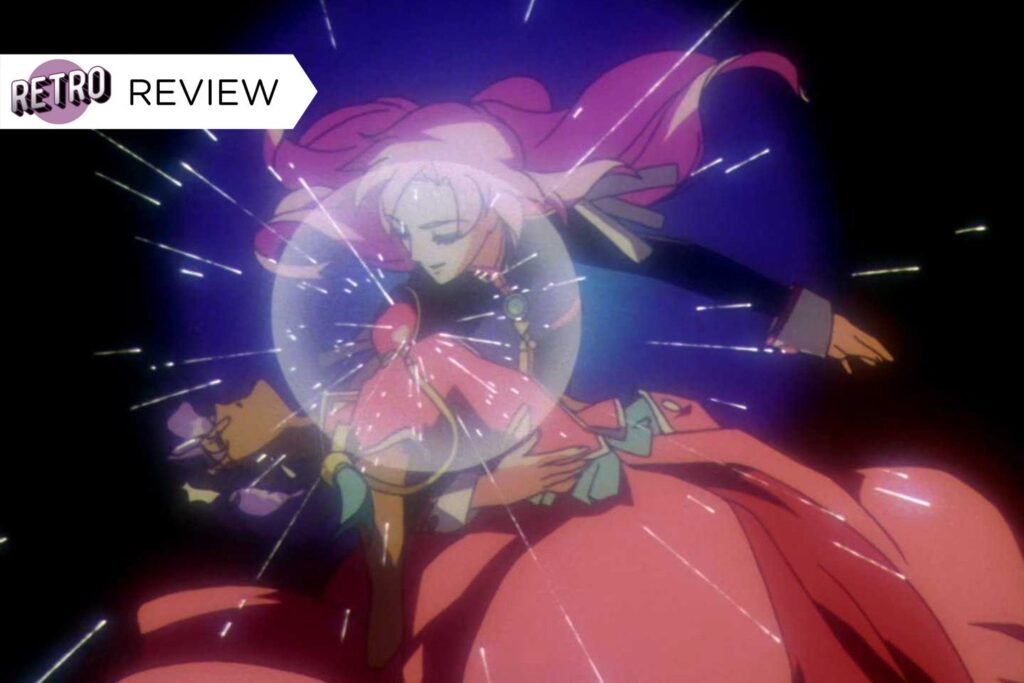Over the years, critics and everyday people have come to identify media as “Lynchian,” in reverence for how video games, movies, and TV shows evoke the dream-like quality of the late auteur David Lynch. Although most media described as Lynchian takes its inspiration from seminal works like Twin Peaks through referential nods, no show completely embodies the ephemeral vibe of Lynch’s opaque-yet-piercing style of storytelling quite like the similarly influential shojo anime series Revolutionary Girl Utena.
The “story”
Revolutionary Girl Utena, animated by J.C. Staff, is a 1997 anime adaptation of Be-Pas and Chiho Saito’s manga series of the same name. The story follows a tomboy princess named Utena Tenjo who, after the death of her parents, encounters a prince who gifts her a rose ring and promises to meet her again in the future. Rather than resign herself to being a princess, Utena decides to live up to the idea of being like the prince who saved her.
This inevitably leads Utena to become involved in a series of duels with student council members at her school for the right to the Rose Bride, a girl named Anthy Himemiya. While her classmates squabble over ownership of Anthy to gain the power she wields to achieve some ambiguous notion of world revolution (objectifying and abusing her in the process), Utena takes up arms (by drawing a sword from Anthy’s chest) to liberate the Rose Bride from her cruel destiny.

At first glance, Revolutionary Girl Utena appears to be a flowery fantasy series, with much of the rhythm in the first half of its season devoted to repetitive weekly battles. Without fail, each episode features her adversaries grappling with a vice emblematic of a deadly sin before challenging Utena to a duel. Utena, in a similar manner, ascends a lavish spiral staircase to a caucus anthem with lyrics proclaiming birthrights and destiny; undergoes a fantastical, magical girl transformation; and defeats them (most of the time). Sandwiched between and behind these beats are goofy verging on absurdist anime-isms: eating spicy curry results in a Freaky Friday body-swapping; Utena dunks on the boys in basketball as onlookers judge her for being a boy-girl; and the student council schemes while glamorously exposing their peacock chests to the heavens while ghost-riding the whip to the tune of sensual jazz.
Like Twin Peaks, Utena establishes a comforting yet off-kilter rhythm that threatens to become aimless. Its overarching mysteries give way to non-sequitur antics, removing any sense that the show is pressed for time to answer anywhere it’s going. When Utena really starts feeling like it’s one of those “It’s about the journey and not the destination” romps, it cranks things up to 11 with a genuinely revolutionary final stretch of episodes.

Finding meaning in the absurd
Similar to Agent Dale Cooper’s arrival in the sleepy town of Twin Peaks as it grapples with the mysterious death of Laura Palmer, Utena’s volley of duels serves a double meaning. Each duel is a character study unto itself where the students of Ootori Academy, including Utena herself, are stuck in time and forced to adapt or die. Not in the literal sense (mostly), but in the metaphorical way of letting go of idolized memories of people and the past they wished would last forever and move forward. Everyone has rose-tinted glasses, preventing them from confronting the illusions proliferating their nostalgia-rich school terrarium. Rather than have Utena play prince by saving Anthy and her adversaries, she pushes them to save themselves.
Going from a fluttering shojo fantasy series to an existential meditation on par with Neon Genesis Evangelion is no small feat, but Utena does so gracefully. How it achieves this feat comes from the anime, in true Lynchian fashion, relaying its themes in an evident and roundabout fashion. Much of the former occurs in repetitive line deliveries accompanied by a YouTuber-esque red arrow pointing or dinging at objects the show wants audiences to focus on in a given scene. The latter goes full theater through a play-within-play interlude where silhouettes of two ladies act out seemingly tangential asides that tie directly back into the anime’s themes of love and revolution. While the show gives viewers much to chew on with its heavy-symbolism approach to doling out information, it is also heady with its interpersonal dialogue.

Whenever characters in Utena feel some way, they express it aggressively. They’ll shout all the air out of their lungs, callously jab at each other’s insecurities, or hold their tongue in such an obvious way that their silence speaks volumes. Although the English dub can easily be accused of being as wooden and awkward as the actors in Twin Peaks, you’re never confused by the truths and motivations that drive its characters to achieve their goals. Everything is laid bare for all to see, even if the players don’t realize the truths staring them in the face. As the series treks out of its mid-season lull and barrels toward its “Who Killed Laura Palmer” arc in its Black Rose arc, the show pulls off an astounding feat: transforming irritable and bratty characters like Nanami into some of the series’ strongest characters, making them complex voices of reason.

Timeless Influence
Visually, Utena has been referenced in anime, Western cartoons, and comic books like Sailor Moon, One Piece, Code Geass, Fullmetal Alchemist, She-Ra, Steven Universe, and Scott Pilgrim. The series also served as the core premise of Mobile Suit Gundam: The Witch From Mercury, which is evident when you consider that anime writer Ichiro Okuouchi contributed to both anime (and Code Geass).
Utena‘s unassuming character design and premise are one of anime’s best honey traps. Despite its modest appearance, Utena is a shojo series that stands shoulder to shoulder with prominent josei and seinen series like Nana and Berserk. Similar to the aforementioned titles, Utena does not shy away from exploring abusive relationships, struggles for autonomy, and the non-linear steps toward recovery. Its relationships, even those between Utena and Anthy, are messier than they appear. Its sibling relationships, many of which are rife with brother-sister complexes, are even more disturbing. The entire series is overwhelmingly captivating and teeming with gripping twists and revelations.
While many a Utena fan will attest to the necessity of multiple rewatches and supplemental YouTube video essays to digest the series’ depth of metaphors, foreshadowing, subtle visual clues that hint at characterization, and where its sequel film (Adolescence of Utena) falls in the equation, like any Lynchian work, seeking concrete and clinical intent behind the “why” to its artistic and narrative choices matters far less than the gut feeling you have as you walk away from the show’s 39th episode. You can glean any array of meanings from the anime, be it butting against the patriarchy, not-so-subtle queer representation, or how seeking comfort in nostalgia will stifle revolutions of the heart. No matter how you look at it, Revolutionary Girl Utena is a Lynchian anime that was both ahead of its time and timeless.
Want more io9 news? Check out when to expect the latest Marvel, Star Wars, and Star Trek releases, what’s next for the DC Universe on film and TV, and everything you need to know about the future of Doctor Who.







